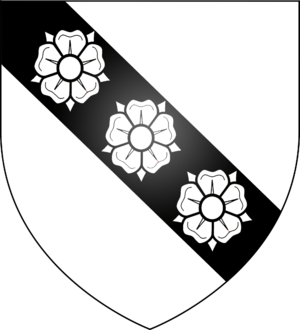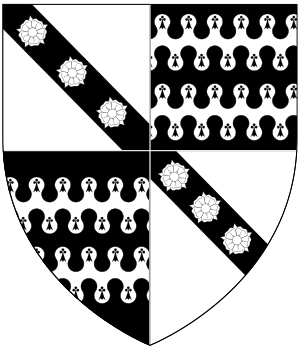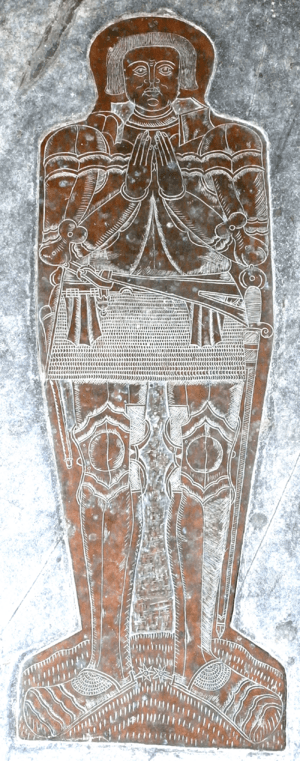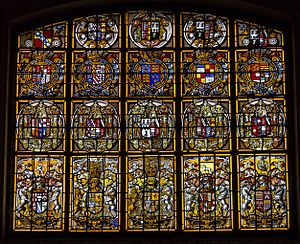John Carey (courtier) facts for kids
Sir John Cary (born around 1491 – died 1552) was an important person in the court of King Henry VIII. He lived in Pleshey in Essex, England. He worked closely with the King as a "Groom of the Privy Chamber." This meant he was part of the King's personal staff. Sir John Cary was also a distant cousin of King Henry VIII.
Contents
Sir John Cary's Family Background
John Cary was the oldest son of Sir Thomas Cary. His family came from Chilton Foliat in Wiltshire. John's grandfather was Sir William Cary. Sir William was the lord of two large estates, called manors, in Devon: Clovelly and Cockington.
Sadly, Sir William Cary was beheaded in 1471 after a battle. There is an old brass plate in a church in Clovelly that many believe shows him. It's next to another brass plate for his son, Robert Cary.
John's mother was Eleanor Spencer (1472–1536). Her mother, Eleanor Beaufort, came from a very important family. John had a younger brother named William Cary. William was also a courtier and married Mary Boleyn. Mary was the sister of Queen Anne Boleyn. This connection made the Cary family very influential at court.
Sir John Cary's Life and Work
By July 1522, John Cary was serving in the Royal Navy. He was the captain of a King's ship called The Katherine Galley. His ship sailed in the English Channel.
Working for King Henry VIII
By 1526, John was working at King Henry VIII's court. His younger brother, William Cary, likely helped him get this position. John became a "Groom of the Privy Chamber."
In 1528, John Cary tried to help his sister Eleanor. She was a nun, and he wanted her to become the abbess (leader) of Wilton Abbey. However, she did not get the job. Later that year, John became very sick with a disease called "sweating sickness." He recovered, but his brother William, who also got sick, sadly died in June 1528.
Later Life and Knighthood
On July 21, 1538, John Cary was given the priory of Thremhall in Essex. He often lived there. By September 1542, he was back at sea. He was a vice-admiral, leading ships that carried supplies for a military mission against Scotland.
John Cary was made a knight by Edward VI in 1547. This was probably because of his brother-in-law, Sir Anthony Denny, who was close to the new King. Sir John Cary died on September 9, 1552, in Hunsdon, Hertfordshire. He was buried in the church there.
Sir John Cary's Family and Descendants
Around 1538, John Cary married Joyce Denny. Joyce was a widow who already had seven children, including a son who would become the famous Sir Francis Walsingham. Joyce was the daughter of Sir Edmund Denny.
You can see Sir John Cary's family crest, along with his wife's family crest, in a large stained glass window in Mereworth Church in Kent.
John and Joyce had two sons:
- Sir Edward Cary: He lived in Pleshy and Aldenham. He became a Member of Parliament and worked for Queen Elizabeth I and King James I. His son was Henry Cary, 1st Viscount Falkland, who became an important leader in Ireland.
- Wymond Cary
Interestingly, Princess Diana of Wales was a direct descendant of Sir John Cary!





